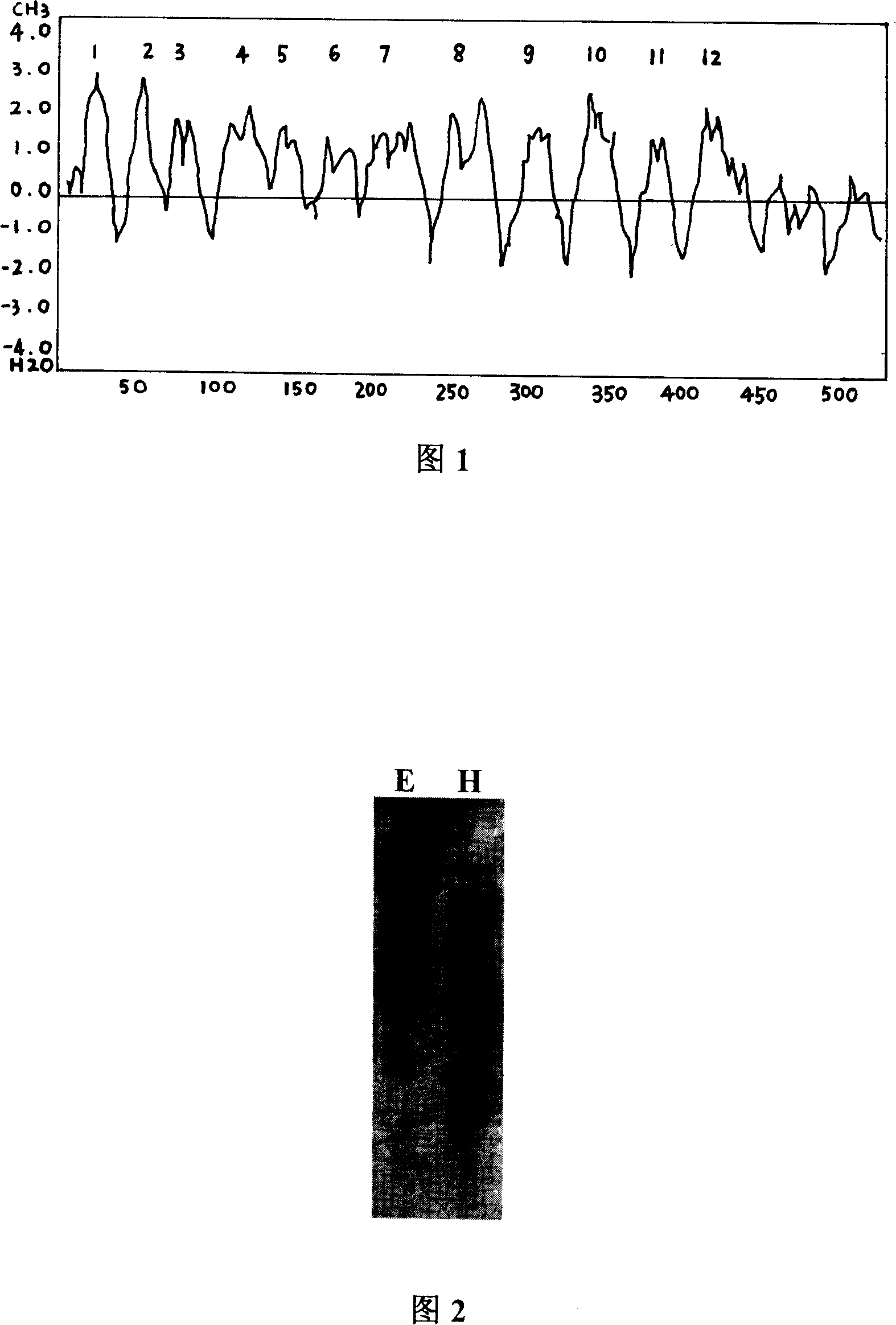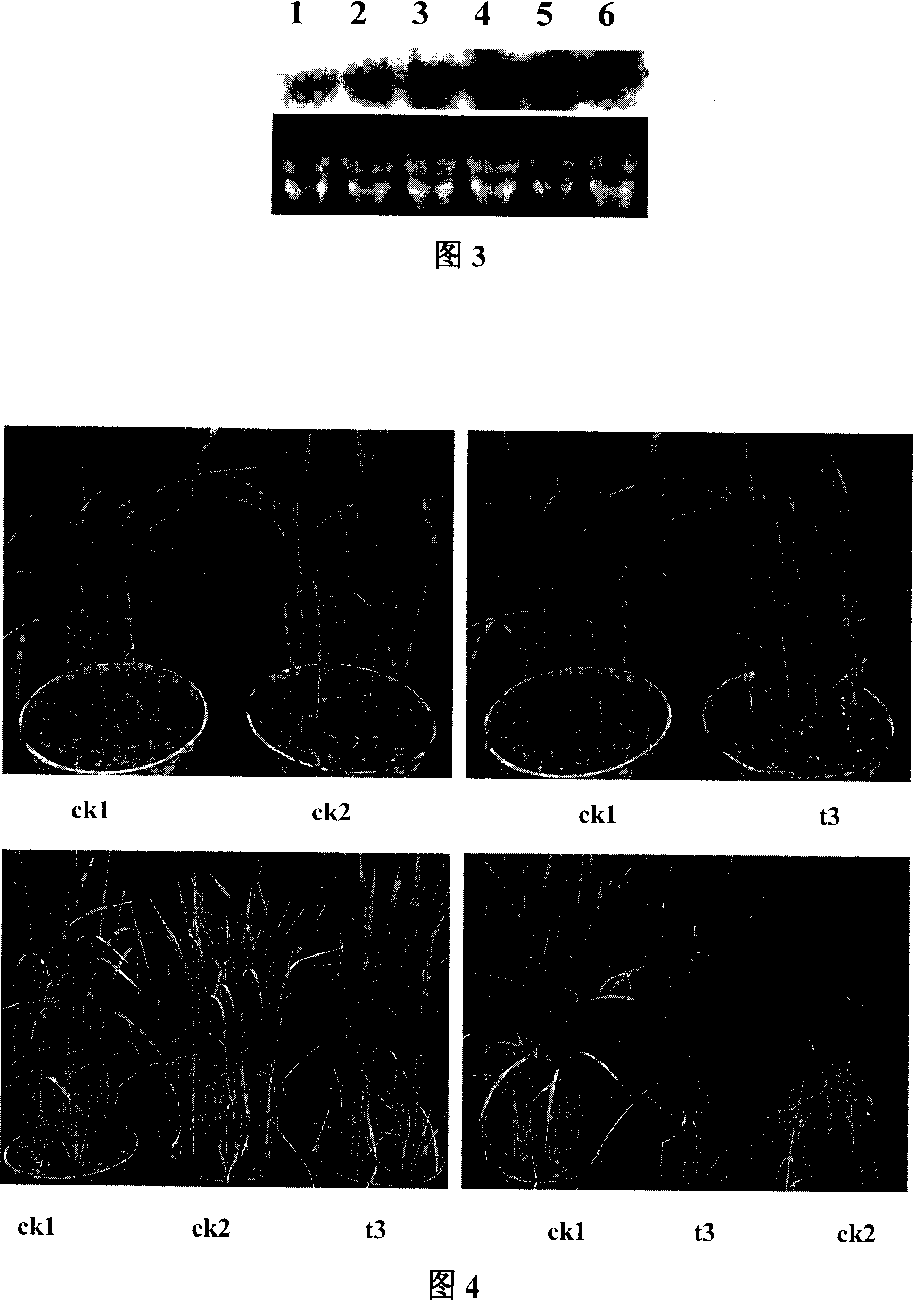Spartina anglica sodium hydrogen pump protein gene SaNHX and application thereof
A sodium-hydrogen pump, rice grass technology, applied in the application, genetic engineering, plant genetic improvement and other directions, to achieve huge economic value and application prospects, improve the effect of salt resistance
- Summary
- Abstract
- Description
- Claims
- Application Information
AI Technical Summary
Problems solved by technology
Method used
Image
Examples
Embodiment 1
[0023] Example 1: Cloning of Spartina Grass SaNHX gene and its sequence information and homology analysis
[0024] 1. Tissue and RNA Isolation
[0025] Spartina comes from Luoyuan Bay, Fujian Province. Part of the tissue was taken, crushed with a mortar, added to a 50 mL tube filled with lysate, and fully shaken, then total RNA was extracted (TRIzol Reagents, Invitrogen, NY, USA).
[0026] 2. Full-length cDNA clone of SaNHX
[0027] According to the conserved amino acid sequence of rice sodium hydrogen pump protein, primers were designed, and using the principle of homologous gene cloning, the full-length cDNA clone was carried out by using the RACE method (Invitrogen kit), which was carried out in three stages:
[0028] (1) 3′-RACE
[0029] 2003SN3' (793bp) was obtained by PCR (AUAP+GSP3-3), recovered, cloned and sequenced. The sequencing results were BLASTed on NCBI, and its nucleic acid sequence and encoded protein were known to have high homology with the known model p...
Embodiment 2
[0039] Example 2: Southern hybridization analysis of Spartina SaNHX gene
[0040] Genomic DNA of Spartina was extracted according to the method of Paterson et al. (1993). Take 1 μg of genomic DNA and digest with EcoRI and HindIII respectively. Digested products were separated by 0.7% agarose gel electrophoresis (30-50V, O / N), and then the gel was treated on a shaker: 0.125N HCl soaking for 15min, denaturing solution (1.5M NaCl, 0.5N NaOH) soaking 30min, soak in neutralizing solution (1.5MNaCl, 0.5M Tris-HCl pH 7.2) for 30min. Finally the DNA was blotted to HybondN with 20×SSC + on nylon membrane.
[0041] Pre-hybridization and hybridization were carried out according to conventional methods (Jin Dongyan et al., 1996; Hybond N + mannual, Amersham).
[0042] Probe and its label: The probe used for hybridization is derived from a DNA fragment about 800 bp in the cDNA of SaNHX gene. Labeling was performed overnight with the Primer-a-Gene kit from Promega.
[0043] The membran...
Embodiment 3
[0046] Example 3: Northern hybridization analysis of Spartina SaNHX gene
[0047] After cultivating Spartina with Hoagland nutrient solution for 5 days, NaCl was added to a final concentration of 400mmol / L, and the stress time was 0, 1, 3, 6, 10 and 24 hours, respectively. The total RNA of the leaves was extracted for Northern analysis. The results are shown in Figure 3 . It can be seen from the figure that the expression of SaNHX was induced by salt stress, and reached a high level after 6 hours of stress, the expression level was still high after 10 hours of stress, and the expression level was high after 24 hours, but decreased. The expression level of the untreated control was also present, but lower. This result is basically consistent with the semi-quantitative RT-PCR results in time.
PUM
 Login to View More
Login to View More Abstract
Description
Claims
Application Information
 Login to View More
Login to View More - R&D
- Intellectual Property
- Life Sciences
- Materials
- Tech Scout
- Unparalleled Data Quality
- Higher Quality Content
- 60% Fewer Hallucinations
Browse by: Latest US Patents, China's latest patents, Technical Efficacy Thesaurus, Application Domain, Technology Topic, Popular Technical Reports.
© 2025 PatSnap. All rights reserved.Legal|Privacy policy|Modern Slavery Act Transparency Statement|Sitemap|About US| Contact US: help@patsnap.com


